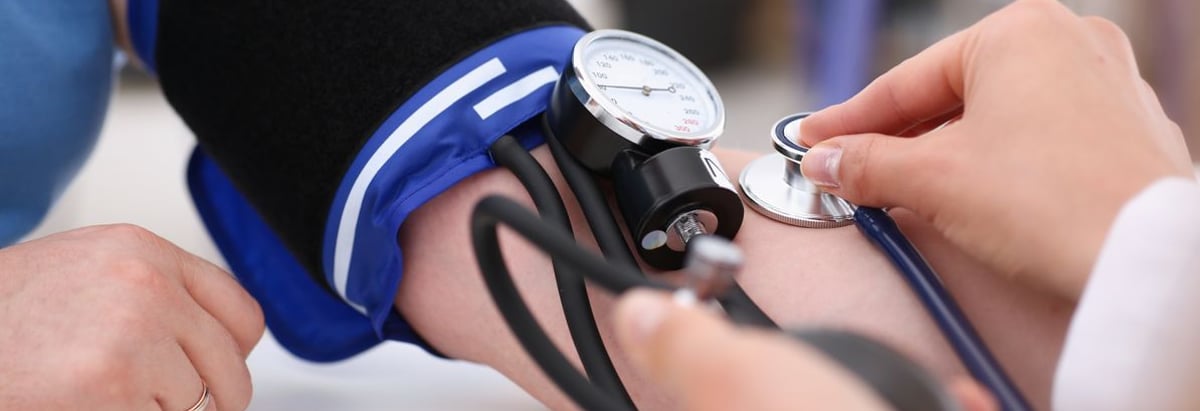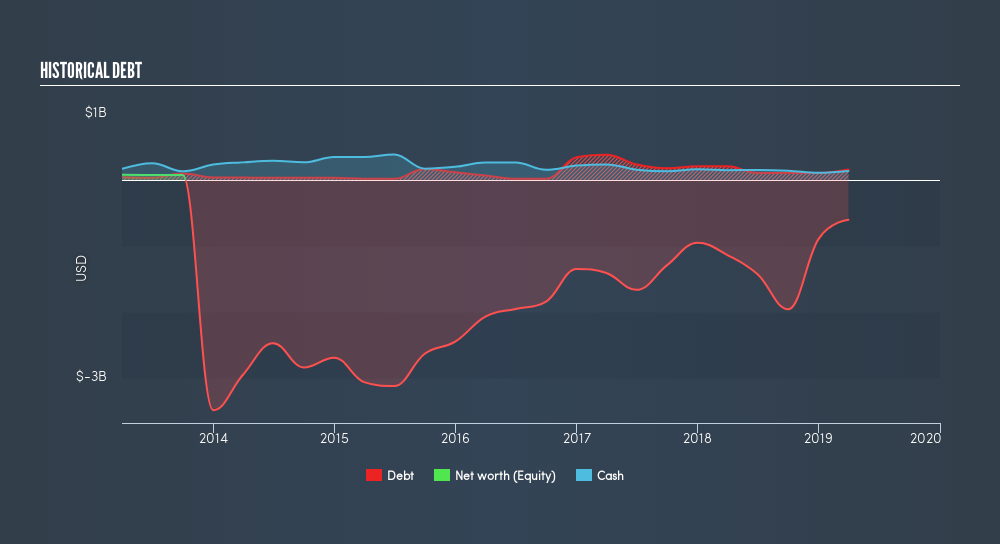- United States
- /
- Healthcare Services
- /
- NasdaqGS:PINC
Premier (NASDAQ:PINC) Seems To Use Debt Quite Sensibly

Want to participate in a short research study? Help shape the future of investing tools and you could win a $250 gift card!
Howard Marks put it nicely when he said that, rather than worrying about share price volatility, 'The possibility of permanent loss is the risk I worry about... and every practical investor I know worries about.' When we think about how risky a company is, we always like to look at its use of debt, since debt overload can lead to ruin. As with many other companies. Premier, Inc. (NASDAQ:PINC) makes use of debt. But the real question is whether this debt is making the company risky.
What Risk Does Debt Bring?
Generally speaking, debt only becomes a real problem when a company can't easily pay it off, either by raising capital or with its own cash flow. If things get really bad, the lenders can take control of the business. However, a more frequent (but still costly) occurrence is where a company must issue shares at bargain-basement prices, permanently diluting shareholders, just to shore up its balance sheet. Of course, the upside of debt is that it often represents cheap capital, especially when it replaces dilution in a company with the ability to reinvest at high rates of return. The first thing to do when considering how much debt a business uses is to look at its cash and debt together.
Check out our latest analysis for Premier
How Much Debt Does Premier Carry?
As you can see below, Premier had US$158.2m of debt at March 2019, down from US$207.2m a year prior. However, because it has a cash reserve of US$137.5m, its net debt is less, at about US$20.7m.

A Look At Premier's Liabilities
According to the last reported balance sheet, Premier had liabilities of US$588.0m due within 12 months, and liabilities of US$2.70b due beyond 12 months. Offsetting these obligations, it had cash of US$137.5m as well as receivables valued at US$404.1m due within 12 months. So its liabilities total US$2.74b more than the combination of its cash and short-term receivables.
Premier has a market capitalization of US$4.95b, so it could very likely ameliorate its balance sheet if the need arose. But it's clear that we should definitely closely examine whether it can manage its debt without dilution. But either way, Premier has virtually no net debt, so it's fair to say it does not have a heavy debt load!
In order to size up a company's debt relative to its earnings, we calculate its net debt divided by its earnings before interest, tax, depreciation, and amortization (EBITDA) and its earnings before interest and tax (EBIT) divided by its interest expense (its interest cover). This way, we consider both the absolute quantum of the debt, as well as the interest rates paid on it.
With debt at a measly 0.037 times EBITDA and EBIT covering interest a whopping 1k times, it's clear that Premier is not a desperate borrower. Indeed relative to its earnings its debt load seems light as a feather. The modesty of its debt load may become crucial for Premier if management cannot prevent a repeat of the 23% cut to EBIT over the last year. When it comes to paying off debt, falling earnings are no more useful than sugary sodas are for your health. There's no doubt that we learn most about debt from the balance sheet. But it is future earnings, more than anything, that will determine Premier's ability to maintain a healthy balance sheet going forward. So if you want to see what the professionals think, you might find this free report on analyst profit forecasts to be interesting.
But our final consideration is also important, because a company cannot pay debt with paper profits; it needs cold hard cash. So it's worth checking how much of that EBIT is backed by free cash flow. Over the last three years, Premier recorded free cash flow worth a fulsome 89% of its EBIT, which is stronger than we'd usually expect. That positions it well to pay down debt if desirable to do so.
Our View
Premier's EBIT growth rate was a real negative on this analysis, although the other factors we considered were considerably better There's no doubt that its ability to cover its interest expense with its EBIT is pretty flash. We would also note that Healthcare industry companies like Premier commonly do use debt without problems. Considering this range of data points, we think Premier is in a good position to manage its debt levels. But a word of caution: we think debt levels are high enough to justify ongoing monitoring. Of course, we wouldn't say no to the extra confidence that we'd gain if we knew that Premier insiders have been buying shares: if you're on the same wavelength, you can find out if insiders are buying by clicking this link.
When all is said and done, sometimes its easier to focus on companies that don't even need debt. Readers can access a list of growth stocks with zero net debt 100% free, right now.
We aim to bring you long-term focused research analysis driven by fundamental data. Note that our analysis may not factor in the latest price-sensitive company announcements or qualitative material.
If you spot an error that warrants correction, please contact the editor at editorial-team@simplywallst.com. This article by Simply Wall St is general in nature. It does not constitute a recommendation to buy or sell any stock, and does not take account of your objectives, or your financial situation. Simply Wall St has no position in the stocks mentioned. Thank you for reading.
About NasdaqGS:PINC
Premier
Operates as a healthcare improvement company in the United States.
Good value with adequate balance sheet.
Similar Companies
Market Insights
Community Narratives





